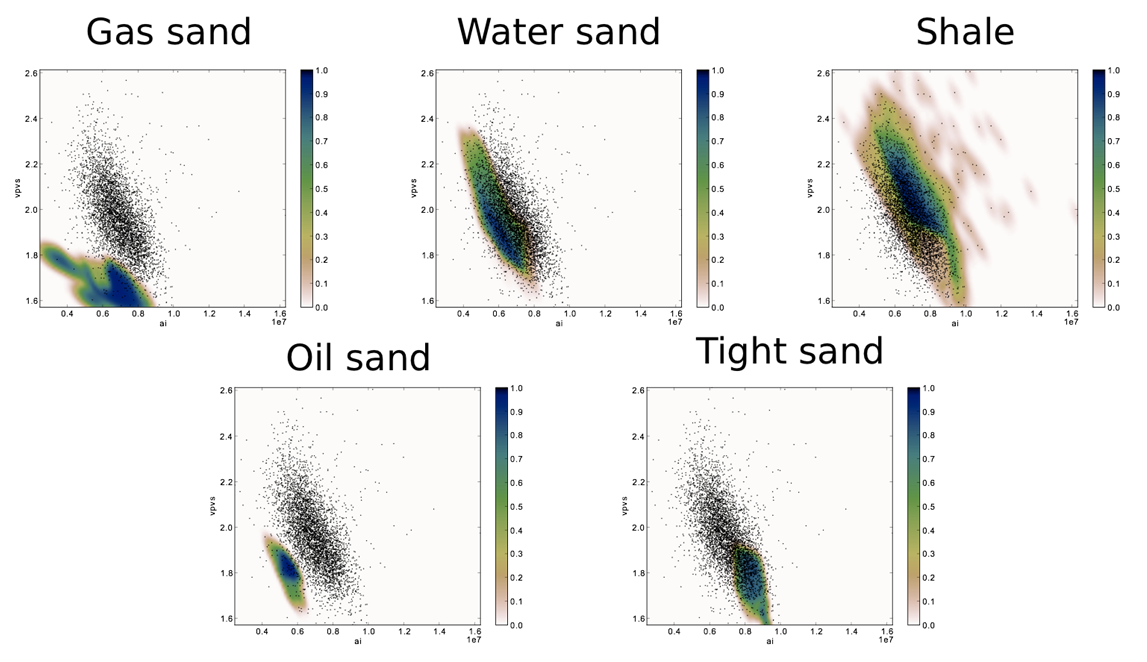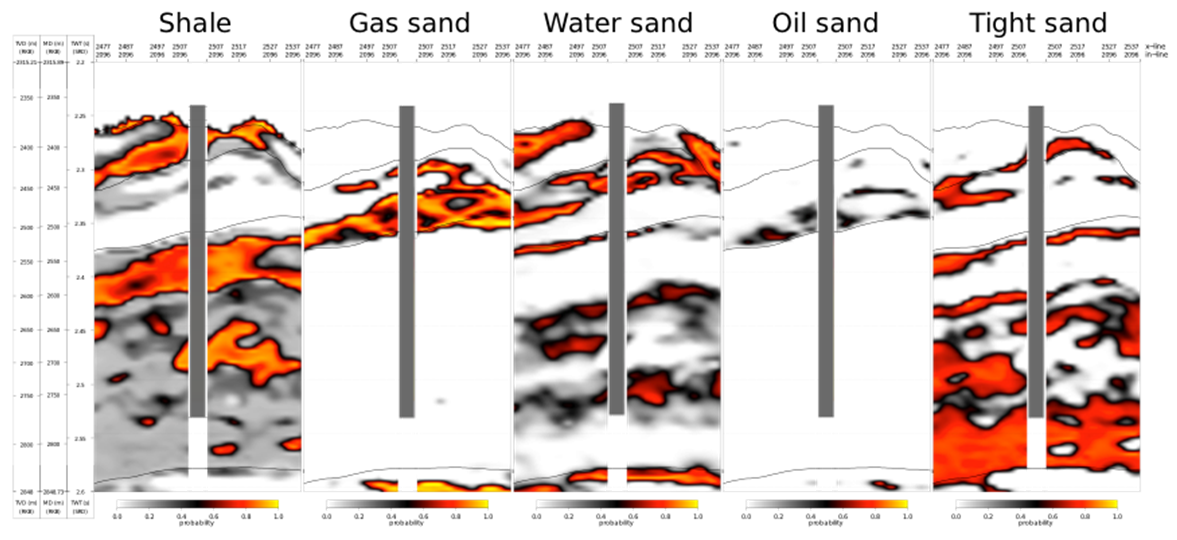Lithology and Fluid Prediction
The prediction of subsurface lithology and fluid content can be performed using different approaches.
- AVO inversion and lithology classification
- Two step inversion
- One step inversion
The first approach is a Bayesian lithology classification scheme, which provides the probabilities of selected lithologies from their elastic response.
The second approach uses the derived rock physics models to directly invert for petrophysical properties such as porosity, volume of clay and water saturation. This enables the transformation of seismic data into a domain that is familiar for all members of the asset team.
Read more about Qeye's rock physics inversion.
The third approach uses a direct probabilistic inversion which allows for a robust handling of uncertainty and non-uniqueness and avoids making pointwise rather than local or global assumptions.
Qeye's Lithology Classification

Our facies/lithology classification is based on non-Gaussian probability density functions estimated using a Gaussian kernel-density estimation technique.
The facies classification workflow includes the following:
- cross plotting of relevant inversion outputs (e.g., Vp/Vs vs. acoustic impedance)
- classification of selected lithology classes
- calculation of lithology probability distributions
- calculation of lithology probability cubes
Click here to see a lithology classification example.

